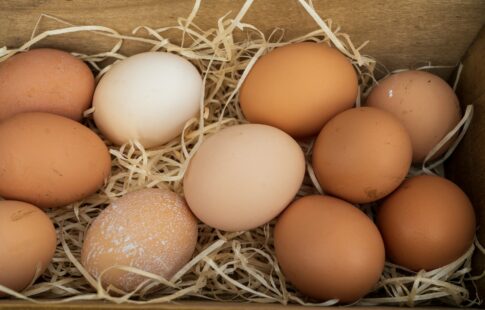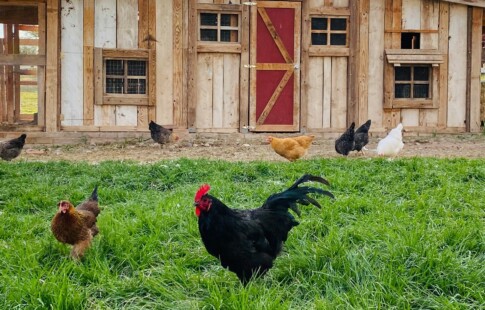
8 Tips for Designing a Permaculture Homestead
We are reader-supported. When you buy through links on our site, we may earn affiliate commission.
What is permaculture? This agricultural practice entails creating a zero-waste closed-loop system similar to how nature operates, renewing the circle of life year after year. It’s the sustainable practice Mother Nature needs to restore soil integrity and produce healthy foods to support human life.
If you want to be a part of the solution, why not plan your landscaping and home utilizing these principles? Here are eight tips for designing a permaculture homestead.
1. Get Mindful
What do you want your dream landscape to look like? Keep in mind you don’t have to complete the entire overhaul overnight. You can take years developing your permaculture homestead, completing one small project at a time until you have everything how you want it.
That requires mindfulness. Spend some time meditating on your property, envisioning what would bring you the most utility — and joy. Write a list without censoring yourself, brainstorming all the features you’d like to include.
Then, rank your list in order of importance or price point. Select those you can reasonably manage, saving the rest for when you have more cash.
2. Choose Natural Materials
Your permaculture homestead can help protect your indoor air quality when choosing natural materials that reduce volatile organic compounds. VOCs emit chemicals like formaldehyde into your indoor air, poisoning you and your family’s health.
However, natural materials like bamboo look beautiful without tons of paint and don’t contain plastic particles. These substances require only a coat of zero-VOC varnish to maintain their beauty for years.
You aren’t relegated to the beach house look, either. You can find zero-VOC furniture constructed from maple and walnut that likewise preserves air quality.
3. Go Solar
There’s still time to reap tax benefits for solar conversions, but you need to act quickly lest Congress fail to renew them in 2024. However, if you create a surplus, you can reap considerable savings — even achieve a zero balance — on your monthly electricity bill.
For example, California’s solar power program is so successful that they currently sell energy to Arizona — another state with ample sunshine. Most solar systems keep you connected to the grid, letting you borrow energy when needed and returning your surplus.
You have the alternative of setting up a fully contained system, but doing so requires more storage than many families can realistically afford. Plus, problems with a self-contained grid leave you without energy until you fix the issue.
4. Collect Water
Unless your jurisdiction prohibits it, collecting rainwater is the most natural way to irrigate your crops while preserving this precious resource. It also requires minimal effort — a small barrel does the trick for most 10-x-10 plots.
Your landscaping choices also help you conserve water. For example, gravity dictates which way the runoff heads. Therefore, planting the most hydro-intensive plants at the base of hills with more drought-resistant numbers only makes sense.
Rain gardens can also conserve water while letting you protect your home’s foundation. These structures can also provide critical habitats for birds and butterflies, adding beauty to your permaculture homestead.
5. Compost
Composting and permaculture are the perfect pair. This process keeps your plant-based food scraps out of the landfill, converting them to rich, loamy fertilizer through the combination of Father Time and Mother Nature.
You can learn how to build a compost bin using scrap materials — it doesn’t have to look glamorous. Study what you should include and leave it in the trash can. Materials like banana peels, apple cores and even unbleached tea bags make the cut. However, you should avoid inserting meat or animal feces as these can contaminate your soil.
6. Xeriscape
Xeriscaping involves using native plants to minimize water use and maintenance needs. It can increase the joy of your permaculture homestead by reducing the amount of time you spend working the land and elevating your leisure time.
Xeriscaping also preserves water, a vital resource. Using native plants helps your collected rainwater go further, removing you from municipal services if you desire—if you have a composting toilet.
7. Rotate (but Don’t Rototill)
What is no-till farming? Tilling involves turning over the top six to eight inches of soil to help nutrients penetrate more effectively. However, it also tears up the tiny plant matter vital to water conservation and preventing runoff. As a result, your carefully tilled earth disappears down the drain.
No-till farming means eliminating this process. It also reduces global warming by removing emissions from mechanical tillers. You can further preserve soil integrity by practicing crop rotation.
8. Build a Greenhouse
If you go off the grid, you need a permaculture homestead that can produce food all year round. However, you might not live in a tropical climate.
Fortunately, it isn’t too challenging to construct a greenhouse. You can use glass from discarded patio doors to fill most frames and build a simple solar heater with discarded aluminum cans. You multiply your eco-friendliness by repurposing materials and creating a perfect place to nurture plants in winter.
Designing Your Permaculture Homestead
Permaculture uses the land how nature intended, constantly recycling materials to preserve vital resources. It’s the answer to many sustainability problems.
Follow the tips above for designing your permaculture homestead. Whether you go off the grid or simply green your footprint, you’ll feel good about how you tread on the planet.
Share on
Like what you read? Join other Environment.co readers!
Get the latest updates on our planet by subscribing to the Environment.co newsletter!
About the author
Steve Russell
Steve is the Managing Editor of Environment.co and regularly contributes articles related to wildlife, biodiversity, and recycling. His passions include wildlife photography and bird watching.





